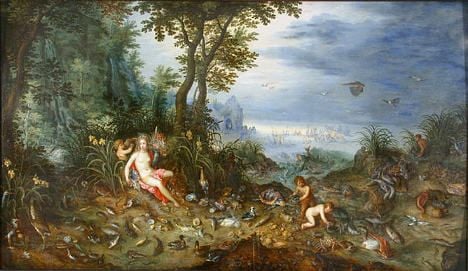The five were detained in 2008 following an operation involving a famed FBI art crimes investigator, Robert Wittman, but their lawyers claim they were enticed by the agency into committing the crime.
The works, valued at €20 million ($27 million), were stolen in August 2007 from the Musee des Beaux-Arts Jules Cheret in Nice in a heist that saw the thieves threaten staff, stuff the paintings into bags and escape in under five minutes.
Two of the men, Pierre-Noel Dumarais, 64, and Patrick Chelelekian, 59, are accused of having organised the heist with their alleged accomplices, Patrice Lhomme, 46, Gregory Moullec, 41, and Lionel Ritter, 39.
The five admitted at the trial in southern France on Monday to having carried out the robbery but denied accusations from museum staff that they were armed.
They face between 30 years and life in prison if convicted on the charges of organised armed robbery and criminal association. A verdict is expected on Friday.
The paintings — “Cliffs Near Dieppe” by Claude Monet; “The Lane of Poplars at Moret” by Alfred Sisley; and “Allegory of Water” and “Allegory of Earth” by Jan Brueghel the Elder — were recovered in a sting organised by the FBI and French police in June 2008.
The paintings were allegedly stolen on the orders of a French citizen living in Florida, Bernard Jean Ternus, who pleaded guilty in a US court in 2008 to conspiring to sell the art works. He was sentenced to five years and two months in prison.
Ternus allegedly told the thieves he had buyers lined up to pay three million euros for the paintings, which because of their fame would have been difficult to unload on the black market.
Ternus arranged for the thieves to meet the buyers in the southern French port city of Marseille but was unaware that he had been dealing with undercover French police and FBI agents reportedly working for Wittman, then the FBI’s top art crimes investigator.
The five were arrested after finalising the deal and Ternus was detained in Florida.
The suspects’ lawyers allege that Wittman, who last year published a book on his exploits entitled “Priceless: How I Went Undercover to Rescue the World’s Stolen Treasures”, effectively ordered the heist to infiltrate European art crime gangs.
Wittman was working undercover at the time on the world’s biggest unsolved art crime — the 1990 theft of works worth an estimated $500 million by Vermeer, Rembrandt, Degas, Manet and other artists from the Isabella Stewart Gardner Museum in Boston.
“It is a shame that (FBI) agents, in order to recover paintings stolen on their territory, are making orders that… lead to other thefts on French territory,” said Ludovic Depatureaux, a lawyer for Dumarais.
Both the Monet and Sisley paintings had previously been stolen from the same museum in 1998 when thieves were said to have broken into the curator’s home and forced him to drive to and let them into the premises.
But they were recovered a week later and the curator subsequently pleaded guilty to having masterminded the theft.



 Please whitelist us to continue reading.
Please whitelist us to continue reading.
Member comments